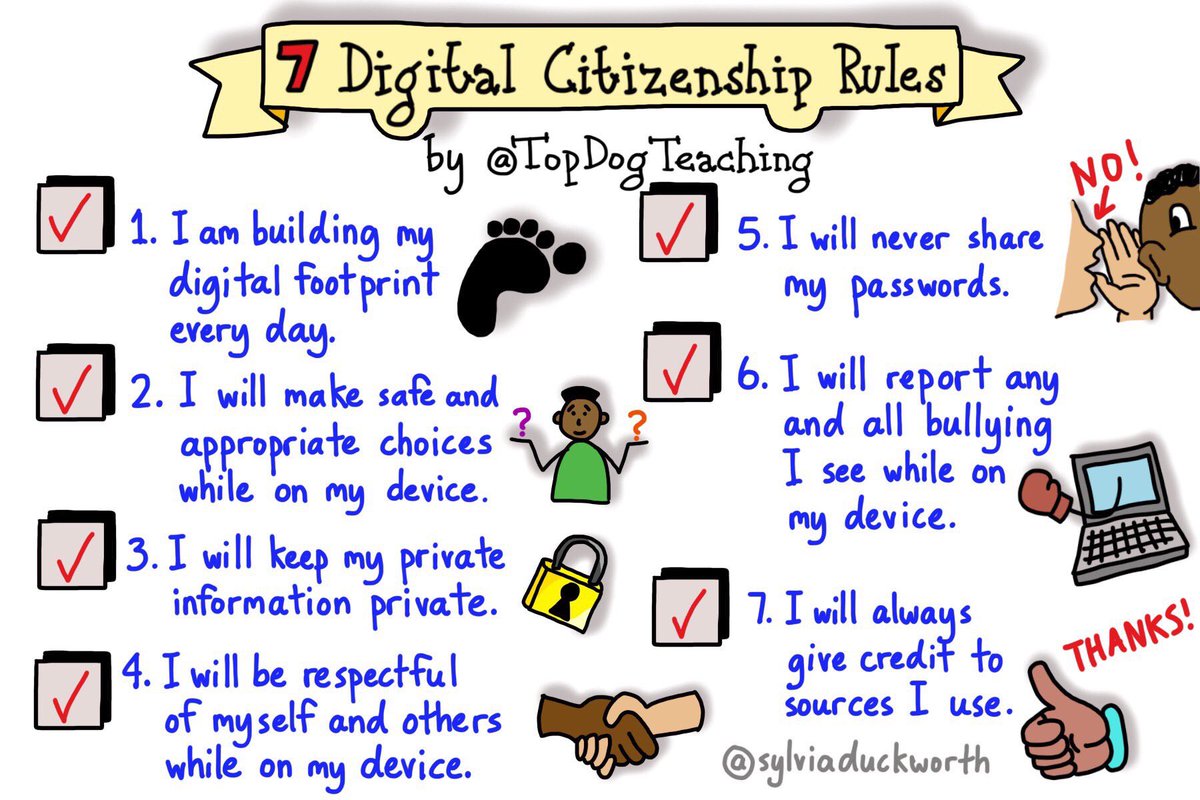What is Digital Citizenship?
When you hear Digital Citizenship, what first comes to mind? Maybe it’s a combination of thoughts like internet safety, cyberbullying or determining whether it is fake news. The whole idea of digital citizenship can be overwhelming to anyone, especially a teacher or parent. The amount of time our children spend on devices increases annually. We, whether you are a teacher or parent, happen to be the best role models for our students and it’s why I personally want to learn more about digital citizenship. I want to learn all the components of this topic and share my thoughts on this blog as I process the information. My hopes are that you will gain a better understanding of digital citizenship as well and formulate some creative ways to model skills in your classroom. No matter the content that you teach, we need to be able to embrace the power of technology and help our students build healthy habits with technology in order to be successful in the digital age.

Common Sense Media defines digital citizenship as the “ability to think critically, behave safely and participate safely in the digital world.” With 1:1 becoming common among districts, it is important to think about the management of devices and knowing the tools to integrate into our curriculum. However, it is critical we also think about how our students and teachers will be interacting with the internet. With instant connection to the global world at their fingertips, we have to teach them proper online communication and appropriate internet searching. No, our students really don’t have these skills the moment the device gets into the hands. Parents and teachers should model and discuss the culture and community of being online just like we would teach this to our own classroom community. Rather than thinking of Digital Citizenship as a separate entity, let’s think about how to take a couple of minutes during the lesson to have the conversation with students while it is relevant. Think about those strategies you use with your students during Morning Meeting, Advisory Class, or simply when a situation arises. Can you use the same strategy while modeling online behavior and talk through the process? With maybe a few tweaks, I believe you can use the same strategy.
It is also critical that you familiarize yourself with the district’s RUP/AUP. This document discusses the expectations of technology use with district-issued devices. Using the same language written in the RUP/AUP will help reinforce the importance of being safe and smart while on a device. If your district does not have one yet, maybe your class can create their own Digital Citizenship Rules or Code of Conduct. Here is an example of a poster that was created that emphasizes the essential components of Digital Citizenship.
As I pursue my learning with both Common Sense Media and Netzsmartz my goal will be to blog about each of the topics, listed below, as a way for me to process and reflect on my own learning. My hope is for you, as the reader, to learn some basic information about digital citizenship in order to start modeling and talking about it with your students.
- Internet Safety
- Digital Footprint/Reputation
- Self Image & Identity
- Privacy/Security
- Information Literacy
- Creative Credit & Copyright
- Cyberbullying & Digital Drama
- Relationships & Communication

Comments
Post a Comment